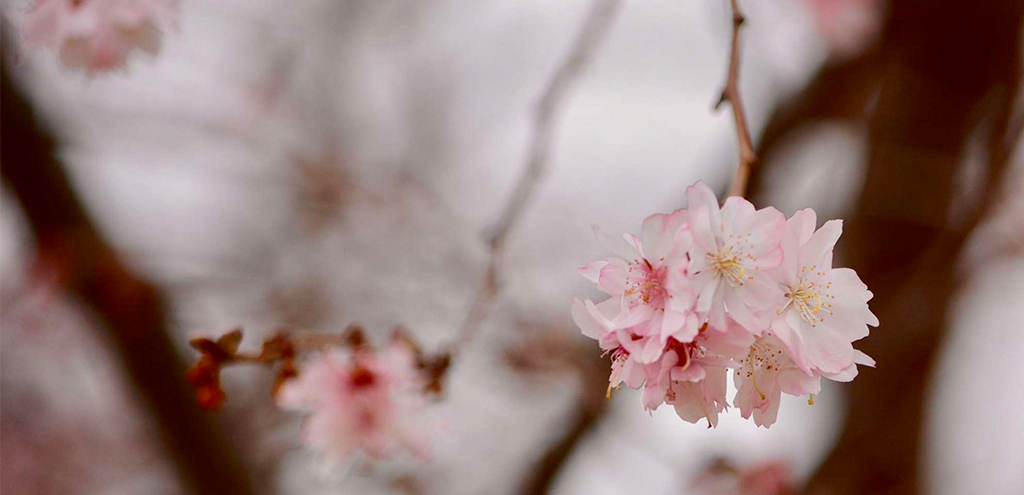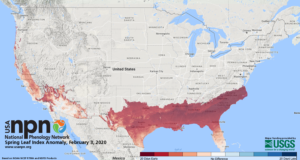THE LEAFLET

Spring Outlook
Well folks we’re about halfway through winter and this warm spell has us dreaming of the most wonderful time around here: spring! With warmer temps and no humidity, #peakbloom forecasting, tree plantings and blooms galore, it is a magical time in the District. Will we see spring crop up sooner rather than later?
After an anti-climatic winter and one of the warmest Januarys on record, it looks like that trend will continue. A Washington Post article summed it up best, “January behaved more like April in Washington, and that is not okay.” Already the D.C. region has seen little to no snow and surprisingly warm temps; today is forecasted to be in the 60s! It seems like, ready or not, spring is on its way.
And no, that is not because famed groundhog Punxsutawney Phil did not see his shadow on Sunday. No shadow signifies an early spring according to folklore.
While we love folklore around here we also love a slightly more scientifically significant way to monitor seasonal changes – phenology!
A refresher on phenology for those who need it: plants and animals don’t have calendars or watches, but many of them take cues from the changing seasons. Phenology studies the timing of the biological events in plants and animals such as flowering, leafing, hibernation, reproduction, and migration. Tree people are really interested in phenology as it relates to tree leaves and the emergence of pests that threaten our beloved trees.

Spring Leaf Out map courtesy of the National Phenology Network
According to the National Phenology Network spring is already on its way, almost 20 days early in some places! (It should be noted that spring is considered by the timing of leaf out or bloom for species active in early spring).
It’s not only those tracking spring leaf out and bloom that note spring’s knocking on our door. The recently released February Outlook by the Capital Weather Gang predicted a “warmer than normal” February and noted “our cold-weather season is mostly missing and it shows little sign of returning in February.”
While it might be a warm February, who knows what awaits us in March – remember the cold snap of 2018 or the snow in 2017?
Interested in tracking seasonal changes in an urban environment with us? We’re looking for folks to host a timelapse camera in the spring or fall so, together with American University, we can look at the impact cities have on trees’ biological processes.
Jealous of all the beautiful flowers and blooming trees that are heading our way? Looking to add a burst of spring to your yard? We have some early bloomers that will bring a smile to your face (for free!) and contribute to D.C.’s urban forest.
Header image of Higan cherry trees by WTOP/Dave Dildine.